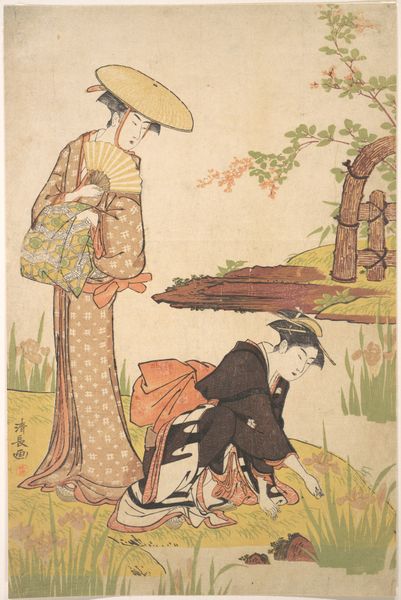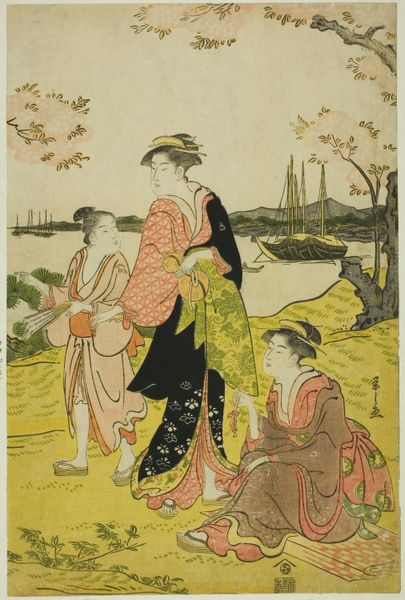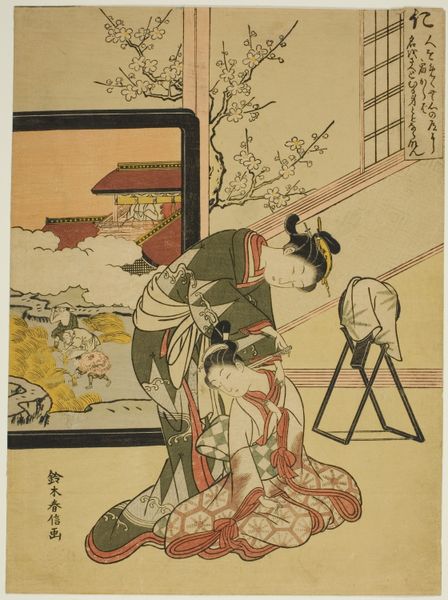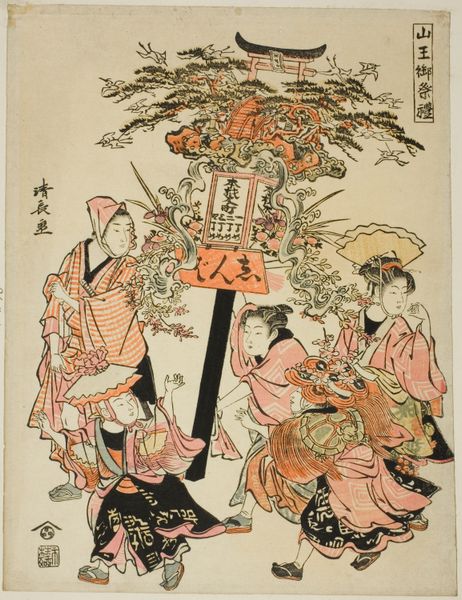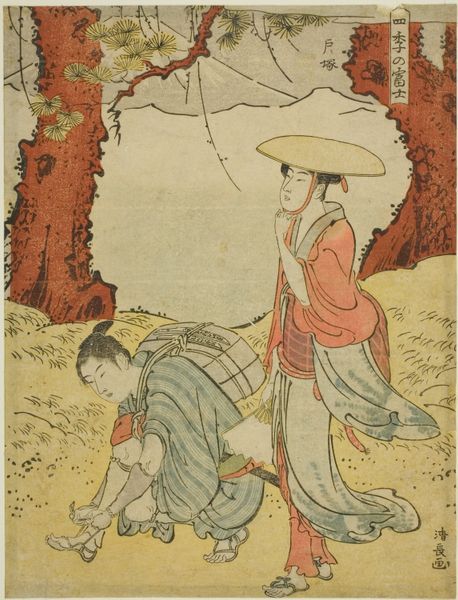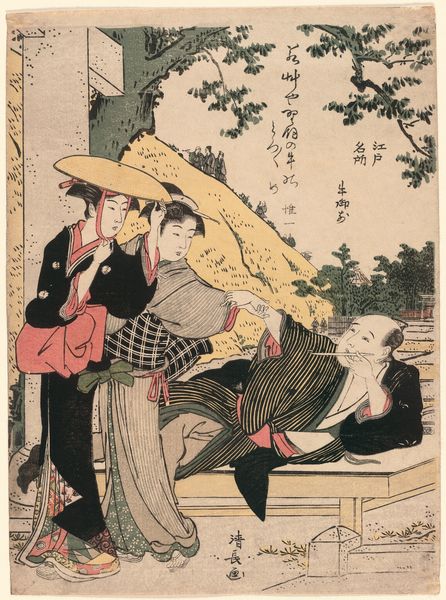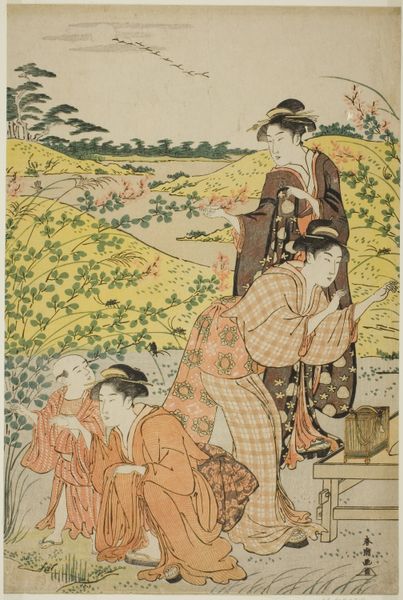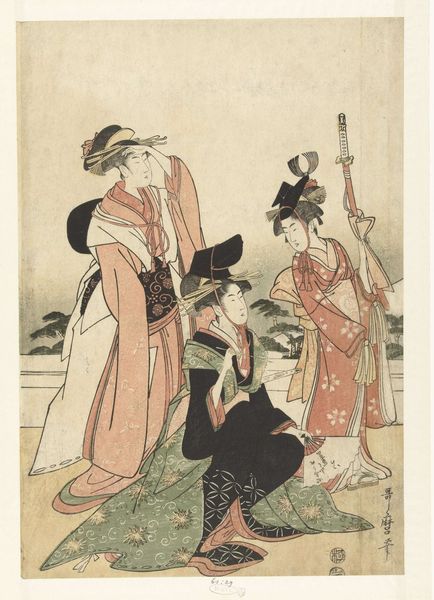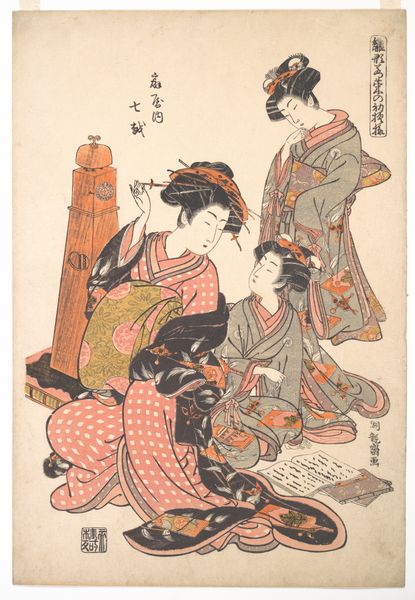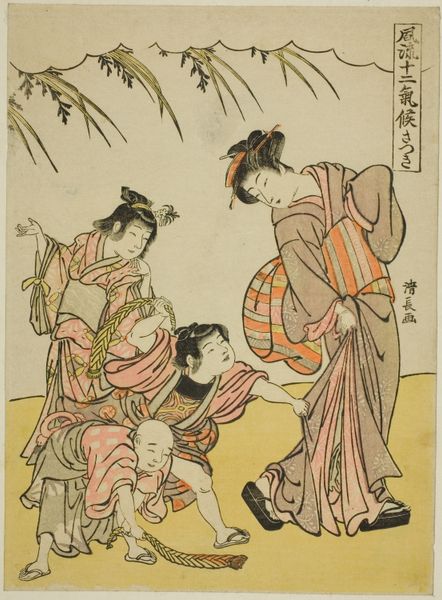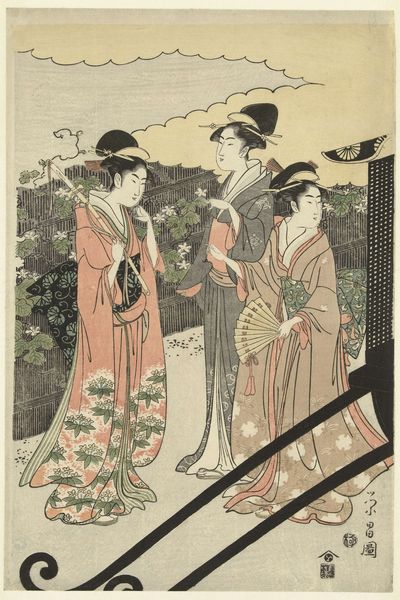
The Actors Iwai Hanshiro IV as Kuzunoha, Ichikawa Yaozo III as Yakanpei, and Ichikawa Ebizo IV as Abe no Doji, in the play "Ashiya Doman Ouchi Kagami," performed at the Nakamura Theater in the ninth month, 1784 1784
0:00
0:00
print, woodblock-print
#
portrait
# print
#
asian-art
#
ukiyo-e
#
woodblock-print
#
genre-painting
Dimensions: 38.5 × 26.0 cm
Copyright: Public Domain
This colorful woodblock print by Torii Kiyonaga, now in the Art Institute of Chicago, depicts actors in a Kabuki performance from 1784. Kabuki was a hugely popular, and officially sanctioned, form of entertainment in Edo-period Japan, enjoyed by a wide cross-section of society. Prints like this one served as both publicity for the plays and as souvenirs for theatergoers. Note the exaggerated makeup and costumes, visual codes that would have been instantly recognizable to audiences. The play's title, "Ashiya Doman Ouchi Kagami," suggests a story of intrigue and power struggles, themes common in Kabuki. Kiyonaga was a leading artist of his time, known for his elegant and refined style, which catered to the tastes of the urban merchant class. By studying playbills, costume books, and other visual sources, we can reconstruct the social world that gave rise to this vibrant art form. In doing so, we can learn a great deal about the intersection of art, commerce, and popular culture in 18th-century Japan.
Comments
No comments
Be the first to comment and join the conversation on the ultimate creative platform.
